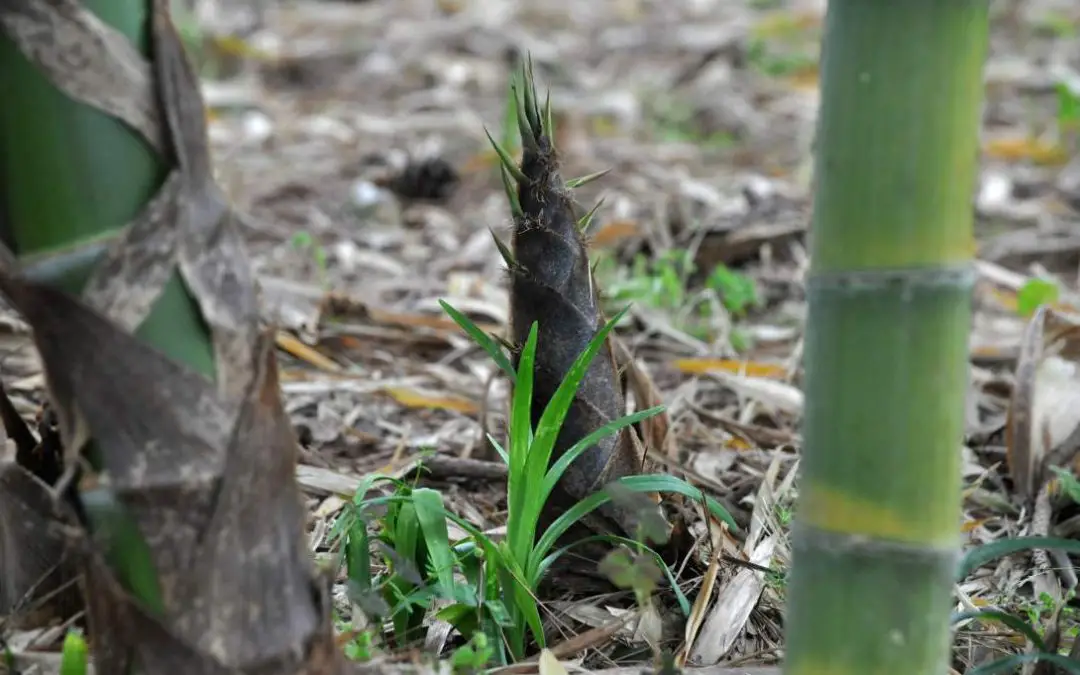Thanks to its strength, resilience and versatility, bamboo has earned a reputation as one of the world’s most remarkable resources. It seems there’s almost nothing bamboo can’t do. You can eat it, you can wear it, you can build a house and you can fuel a car with it. Not only that, bamboo can also create jobs and sequester carbon. As a component in reforestation efforts, bamboo is also being recognized as pioneer species.
An unusually hardy grass, bamboo can serve as an ideal pioneer species, capable of taking root in degraded soil and barren landscapes. Its shallow, tenacious roots can penetrate tight spaces, hold the topsoil together, and draw up the water table. Bamboo is also quick to grow tall and bushy, providing shade for other seedlings and upstarts. It requires little in the way of soil nutrients, and only needs some regular rainfall to survive the first few seasons. Once established, bamboo is extremely resilient.
What is a pioneer species?
Pioneer species play a vital role in the restoration and reforestation of degraded land. Whether the land has been spoiled by natural calamities like fires and volcanic eruptions, or manmade disasters like mining and clearcutting, only select species can survive in these hostile landscapes.
Before most high-profile flora can return to these environments, pioneer species need to step in and lay some of the groundwork, so to speak. Some of the first species to colonize the depleted terrain will be lichens and moss, which can grow directly on rocks, without soil. In other settings, lyme grass can thrive in pure sand and begin to generate more substantial topsoil.
Gradually, these simple life forms make the habitat more hospitable for larger, more demanding species. In the most challenging scenarios, the first wave of organisms will die off. Then their plant litter and decayed matter will go into building the soil. These are the true pioneers. They give their lives for the cause and pave the way for a second wave. Bamboo can play an important role at this stage.
In milder catastrophes, like restoring degraded agricultural land or a clearcut forest, secondary pioneers can step in much sooner. This is another niche where bamboo proves beneficial.
Bamboo engages the ecosystem
Exceptionally resilient, bamboo can survive and thrive in some pretty adverse growing conditions. As such, bamboo is able to get an early start in challenging terrains on the road to recovery. Bamboo is especially valuable in settings where the soil has been depleted by over-farming.
Bamboo’s robust rhizomes and fast growth rate make it a superior plant in the process of land restoration. The complex root network of bamboo is excellent for holding the topsoil together and preventing erosion. It can also help to bring up the water table, making the landscape more inviting for other plant life. At the same time, the roots are shallow, so they don’t compete with other trees and shrubs with deeper roots.
As bamboo continues to grow, it drops an abundance of leaves which will break down and add to the soil composition. This is essential in the restoration of any forest. Richer topsoil, held together by shallow rhizomes, can do a much better job of retaining moisture.
We also know that bamboo is very tall for a grass. So unlike most other grasses, most bamboos will quickly grow tall enough to provide shade for the next wave of species. This is another critical feature for a recovering habitat. Most people think of reforestation as just planting trees. But in most situations, the pioneer plants need to come in first to bolster the soil and cast some shade.

Bamboo and reforestation
Naturally, bamboo usually spreads by way of its sprawling rhizome roots. That’s because bamboo rarely flowers and goes to seed, but the roots are very effective. In nature, therefore, it’s not common to see a bamboo seedling sprout up as pioneer species in a recovering forest.
In some cases, however, after a fire, for example, most of the vegetation will be burned off, but the bamboo roots can survive. When this happens, it’s not a new bamboo plant sprouting up, but an old one. Even so, it still offers all the benefits of a pioneer species, preventing erosion and generating a quick shade canopy.
When humans get involved with intentional reforestation projects, introducing young bamboo plants can be a powerful strategy. Bamboo seeds have a pretty low survival rate, but raising bamboo in a nursery for a few years is far more effective. Once the roots are developed and the plants are established in their pots, they can go into the ground with a high likelihood of survival. This way, forestry planners can select a variety of local native bamboo species, ensuring maximum biodiversity. Companion planting with other native plants, including a mix of ground covers and taller canopy flora should lead to beautiful, long-lasting results.
Further reading
If you enjoyed reading about bamboo as a pioneer species and want to learn more about the ecology and physiology of this remarkable grass, check out some of these other in-depth articles.

























